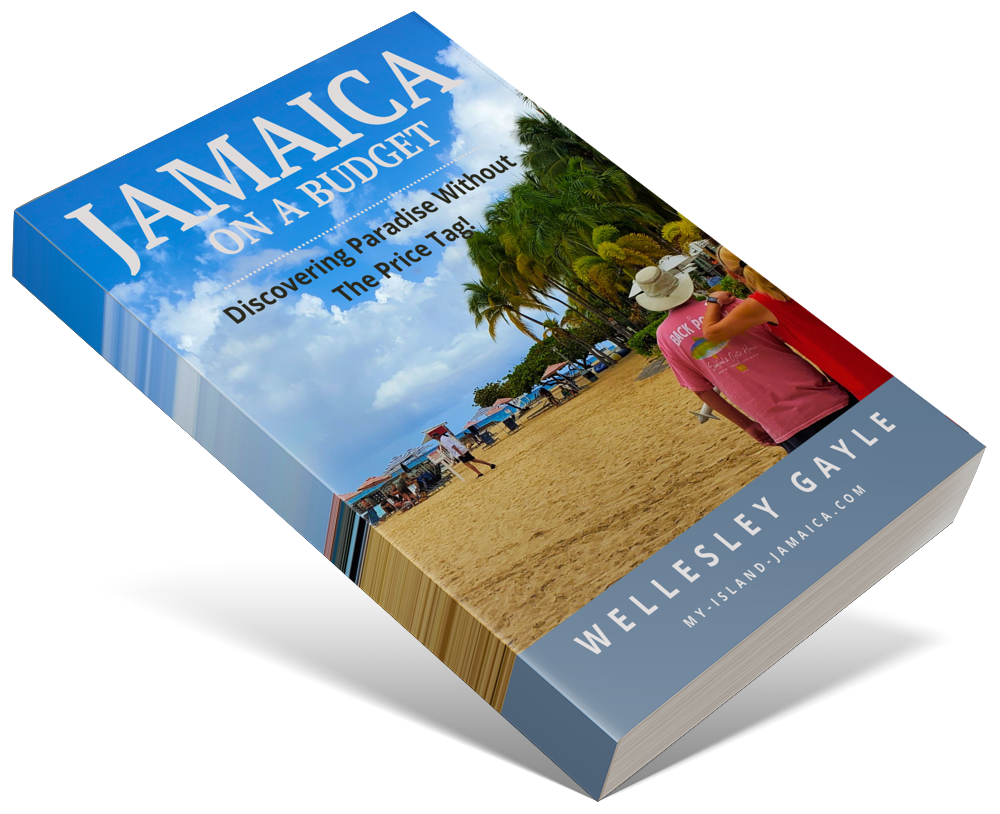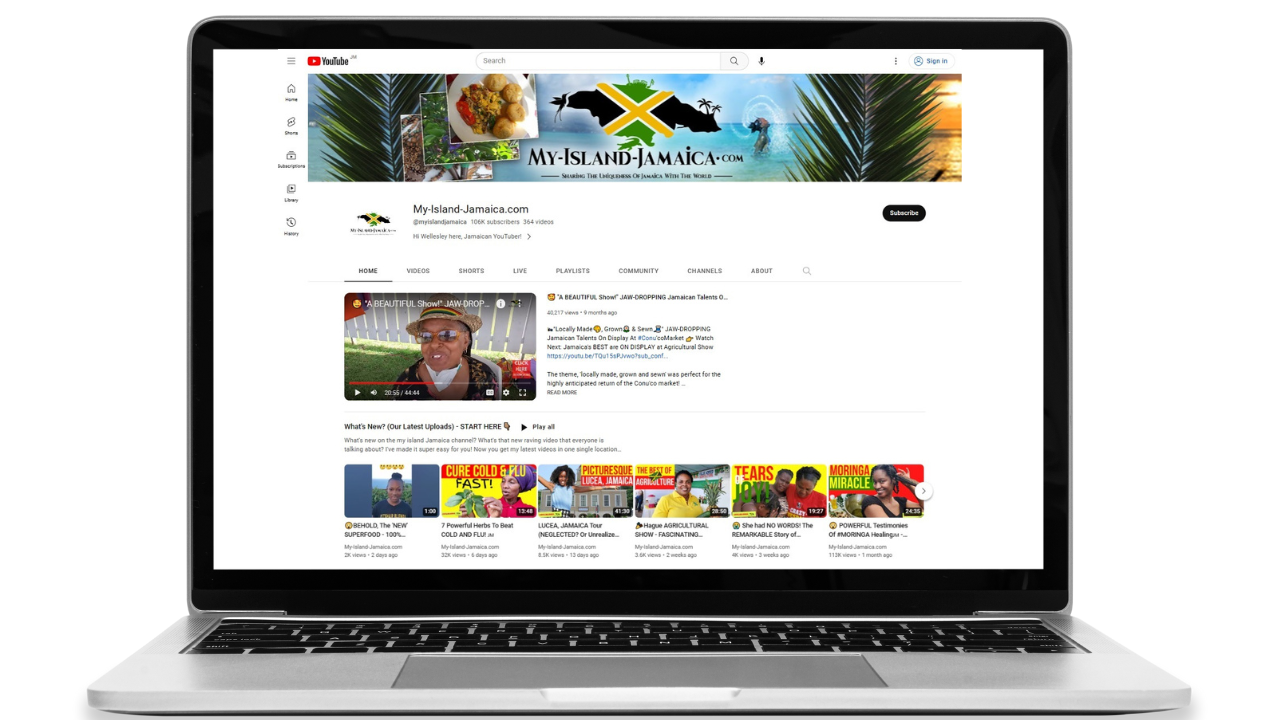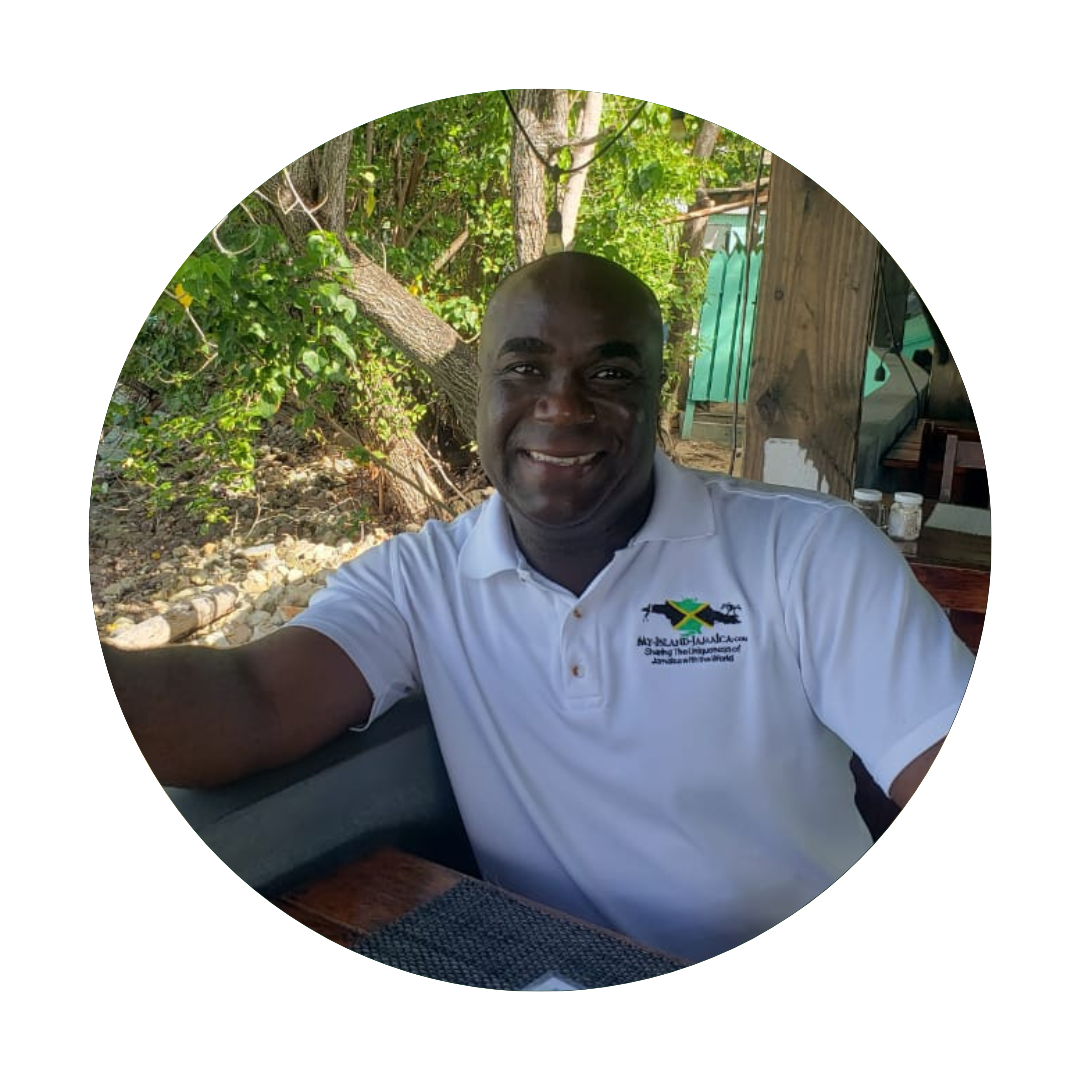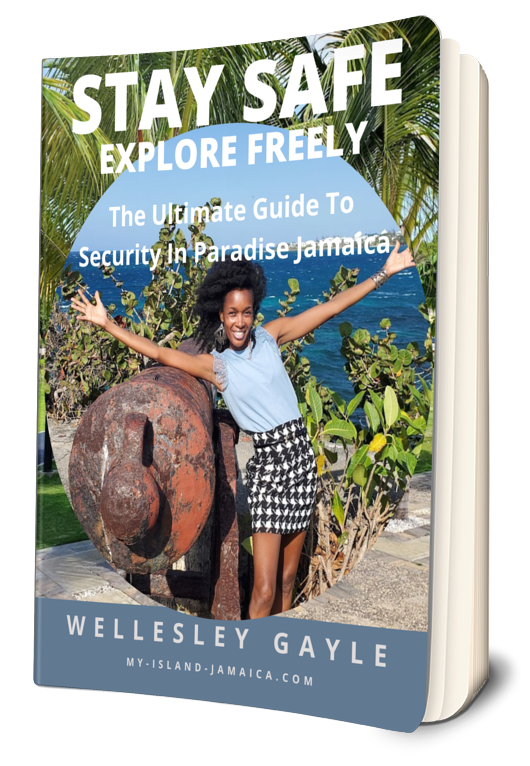Subscribe for all my updates and don't miss a thing! Sign me up!
What did the Tainos contribute to Jamaica?
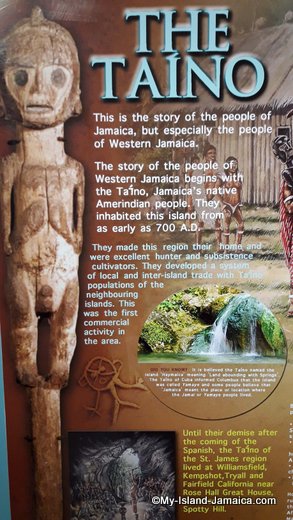
Answered by Aneisha Dobson, Associate Writer
As our Independence celebration here in Jamaica is fast approaching, we remember our fore fathers, those who paved the way for the present generation.
Our African ancestors are usually the most popular topics of discussions during this time. However, it is important that we highlight and give credence to the indigenous people of Jamaica, known as the Tainos.
In some books you may see them being referred to as the “Arawaks”.
The Indigenous People of Jamaica
It is believed that the Tainos were the first group of people to make the island of Jamaica their home.
Their arrival to the island was quite an interesting one. The Tainos were one of the Amerindian people who originated from Central East Asia. As their main source of food (buffaloes, deer and hairy mammoth) started to deplete, the Amerindians left their homelands in search of food.
Their journey commenced during the ice age travelling across the Bearing Strait and entered into North America. Many Amerindians settled in Northern America, but some Amerindian groups, including the Tainos, continued their journey and settled in South America.
After some time, the Tainos sailed to the Caribbean through the Orinoco River in South America and began inhabiting the islands of the Caribbean. The Tainos were known to have settled in the Greater Antilles, Jamaica including, bringing their culture with them.
The Tainos lived simple lives and were described as a quiet, peaceful group of people. These sentiments were echoed by Columbus when the Tainos greeted and showed hospitality to him and his crew upon their arrival.
Physically they were portrayed as being short in stature with olive skin and dark hair. The Tainos did not wear much clothing. Men and unmarried women were usually naked, while married women wore skirts.
However, the most noticeable aspect of their appearance was their body painting. Body paintings were important for ceremonial purposes and when men were going to war.
In addition, they adorned themselves with feathers and ornaments made of gold, shells and other semiprecious stones. Another noticeable physical feature of the Tainos, was their flattened forehead. This was common practice that took place during infancy, where a board was tied to the child’s forehead resulting in them having a flatten forehead.
Like any community, the Taino villages had a social structure. In each village, there was a leader called a cacique, who was at the top of the hierarchy. The cacique had many privileges, such as receiving the best food, living in a larger house and having several wives.
The Tainos diet consisted of a variety of fruit and vegetables that they introduced to the island. For protein, they would fish and hunt small animals, such as iguana, coney, and agouti. They were also noted to be weapon-less and only carried wooden spears and bows and arrows to protect themselves.
Basically, the Tainos lived a simple peaceful life.
However, with the arrival of the Spanish (Columbus) in 1494 to Jamaica, the Jamaican Tainos way of life, as they knew it, changed forever.
Their relaxing, peaceful island paradise transitioned into a mining industry. Tainos who would usually spend their day farming for their families, were now being forced to work in the mines and smelting camps as a result of the Europeans desires to amass gold and silver.
The men dug while the women washed the soil in pans searching for grains of gold and silver. In addition, the Tainos were also forced to smelt the gold into ingots for transportation to Spain.
The harsh treatment inflicted upon them by the Europeans soon caused the Taino race to be completely wiped out. However, some share contrary views. Some believe that the few Tainos who escaped the Europeans sort refuge in the mountains and co-existed with the Maroons.
Whether these ideologies are true or false, the fact still holds that the remnant of the Taino existence and impact on Jamaica is still quite visible.
What has the Tainos contributed to Jamaica?
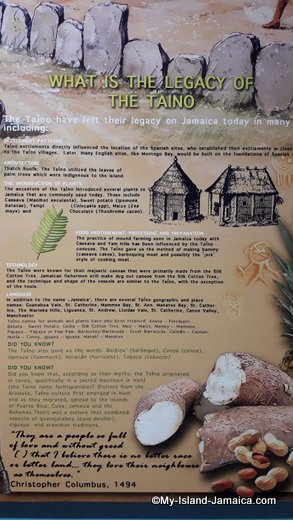
Click On Image To ZOOM
- Plants and crops
Many of the delectable fruits and vegetables that we enjoy today was also once enjoyed by the Taino people. They practiced subsistence living, hence they had no food in surplus.
As such, farming and cultivating crops was a part of the Tainos daily life. In fact, it was common practice for Taino homes to have gardens to plant crops.
Here are some of the crops that the Tainos cultivated that can be found today:- Mammee Apple
- Pineapple
- Star Apples
- Naseberries
- Guavas
- Cashews
- Maize
- Cassava
- Sweet Potatoes
- Ground Nuts
- Peanuts
- Mammee Apple
- Culinary Skills
The Tainos were also skilful and creative in their cooking methods as well. Many of our delectable dishes that people have come to know and love are inspired by our Taino ancestors.
Here’s a few:- Bammy - The cassava root was a primary root crop that was cultivated by the Tainos and baked into a flat cassava bread. The dish was prepared by first cutting the cassava into small pieces, after which they would squeeze out the poisonous juice from the cassava pieces.
When this is done they would shape the juiced cassava thrash into slab-like bread and bake them.
Today, these cassava bread are known as “bammy” and it has become a popular Jamaican dish. It is usually coupled with Esctovich fish (a cuisine from the Spaniards). Read more about Jamaican bammy here. - Pepper Pot Soup - Another delicacy that we inherited from the Tainos is Pepper Pot Soup!
This dish, which is a mixture of meat and vegetable, is described as being rich and savoury. Although some additions have been included in the recipe, Pepper Pot remains an important delicacy on the dining table of many Jamaican homes.
If you interested in trying your own pepper pot soup here’s the recipe. Go ahead and try it out! - Jerk – Whether you prefer Jerk Chicken, Jerk Pork or Jerk Rabbit we can’t deny that jerk is a staple Jamaica culinary skill.
But did you know that it was inspired by the Tainos?
Yes, that’s right! It was customary for the Tainos to cook on a grill known as a “barbacoa” (which means heated sticks) made of pimento wood which was used to jerk wild pigs.
The meat would be seasoned and cooked over a low fire. The Tainos jerked meat in order to preserve it for long journeys. Today, we have replaced the “barbacoa” with metal drums.
Hey! You should know that the word “barbecue” actually derived from “barbacoa”.
- Bammy - The cassava root was a primary root crop that was cultivated by the Tainos and baked into a flat cassava bread. The dish was prepared by first cutting the cassava into small pieces, after which they would squeeze out the poisonous juice from the cassava pieces.
- Tobacco Smoking
When the Spaniards first came in contact with the Tainos, they thought that they had small firebrands in their mouths. However, it was really tobacco leaves rolled together.
The Tainos enjoyed smoking tobacco. But it was not only used for recreation, it also held a special place in religious ceremonies, feasts and celebrations. - Carvings, artistry and other craftsmanship
Many of the artifacts found are a testament to the fine craftsmanship of the Taino people. They were skilled in various areas such as woodworking, pottery, weaving cotton & carving wood and stone.
The Tainos also made their gods, called zemis, out of wood, bone, clay and stone for religious purposes. They also made clay cups, bowls and other vessels.
Today, when I visit the local craft market and see wooden figurines and beautiful Jamaican inspired carving, I am reminded of the Tainos contribution through craftsmanship. - Fishing
Fish and other sea creatures, like the sea turtles and manatee, were some of the Tainos source of protein. As a result, the Tainos had very skilled fisherman and used unique fishing methods.
For instance, they would tie one end of the line to a remora (suckerfish) and the other on their canoe. They would let the remora swim away from the canoe until it attaches itself to larger fish or a turtle.
Once the remora is attached, they would pull it in and capture their prey. Today, although more efficient methods are being used, fishing remains an important part of our culture. - Hammock Making
The Tainos used the cotton they cultivated and wove them into hammocks and used them to sleep in.
- Canoe Making
The advancement of technology over the years has allowed us to travel around the world at a fast pace. But, we often see some of our ancestors’ mode of transportation being replicated. One such mode of transportation was canoes.
The Tainos island hopped from one country to the next by travelling in canoes which they built out of tree trunks.
As you see the legacy of the Taino still beats strong in the island of Jamaica. And the beautiful thing is that you can still find a few remnants of taino (Arawak) life in many of our museums today. I noticed a few in the National Museum West at the Montego Cultural Center recently.
So lots to learn. Thanks again for asking. I welcome your comments below.
See also: The Early History Of Jamaica
Sources:
- Honychurch, L. (1995). The Caribbean People Book 2. United Kingdom: Thomas Nelson & Sons Ltd.
- www.elboricua.com/history.html
- https://jis.gov.jm/remembering-the-tainos/
- http://tainomuseum.org/taino/daily-life/
- http://caribya.com/jamaica/history/taino.indian/
- http://tainomuseum.org/taino/history/
- https://jis.gov.jm/remembering-the-tainos/
- https://tainopeoplesocialstudiesmethods497.wordpress.com/post-columbian/tools-art/
Comments for What did the Tainos contribute to Jamaica?
|
||
|
||
|
||
New! Get My Latest Book👇🏿
|
You asked, I've answered! You no longer need to save for months or years, to enjoy paradise! I spilled the beans! sharing my top tips on finding cozy accommodations and secret gems, only the way a native could! Click Here to pick it up on my e-store and start saving now! |
See The Best Of Jamaica - In Videos!
|
My channel reaches over 140,000 subscribers worldwide and has leveraged over 11 million views, sharing, what I call 'The Real Jamaica'. Subscribe today and join our family of viewers. |
Read More ...
New! Experience The REAL Jamaica!
Book Your Private Tour here and experience Jamaica the way we (locals) do!
P.S. Didn't find what you were looking for?
Still need help?
Click Here to try our dependable and effective Site Search tool. It works!
Or, simply click here and here, to browse my library of over 500 questions and answers! Chances are someone already asked (and got an answer to) your question.
